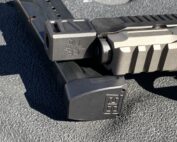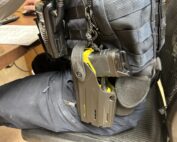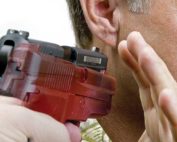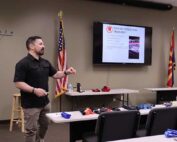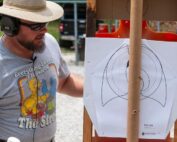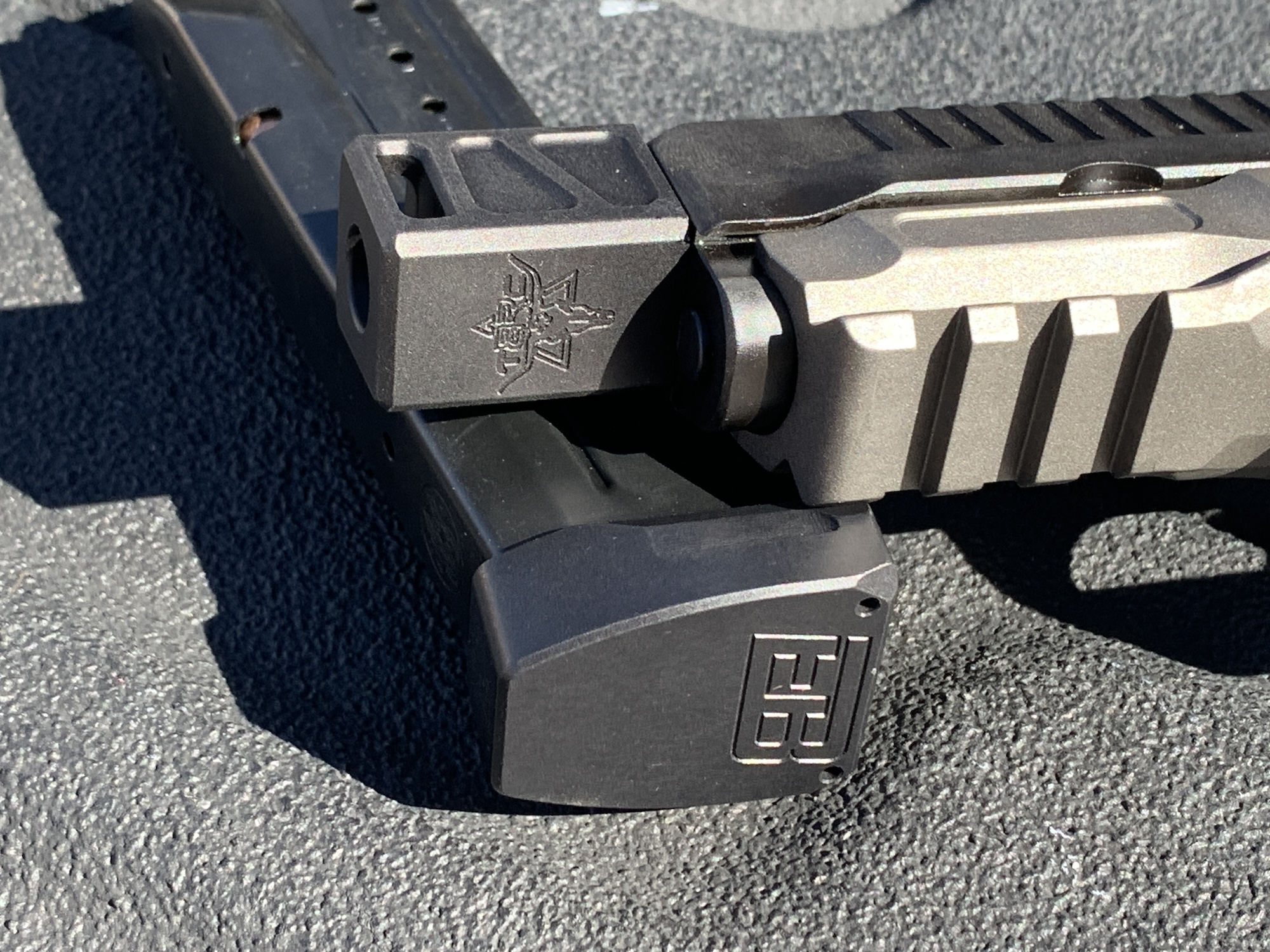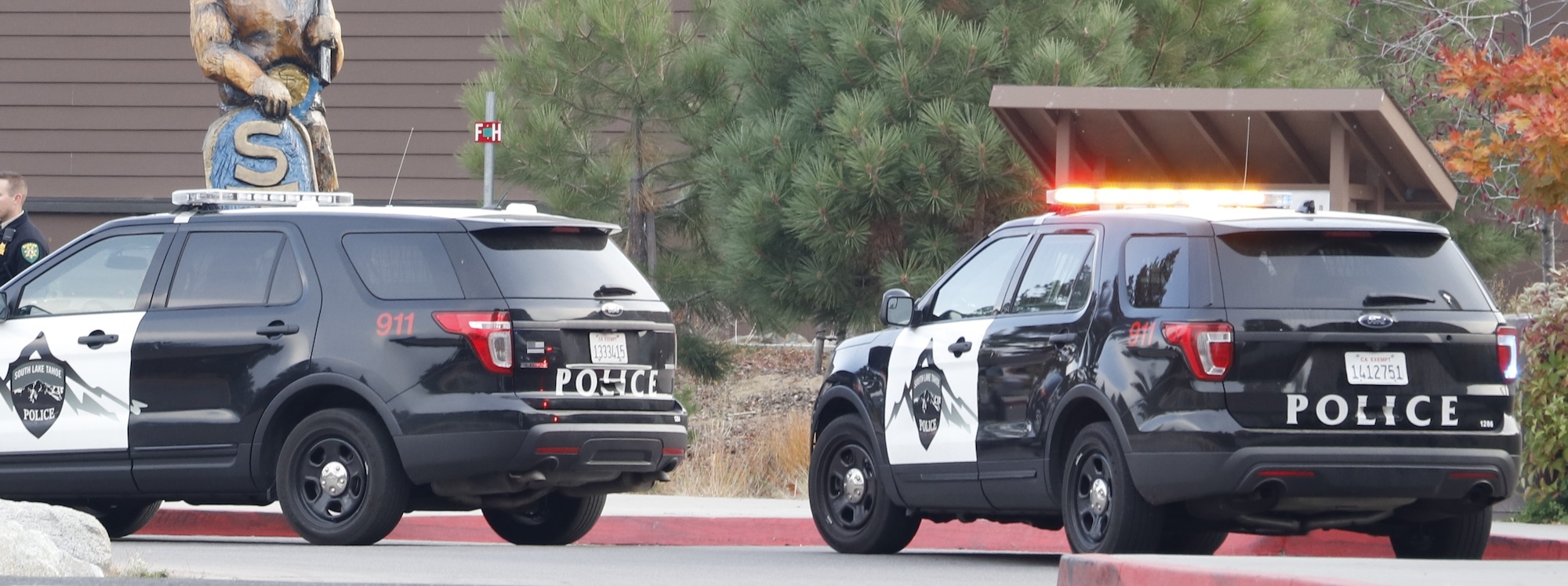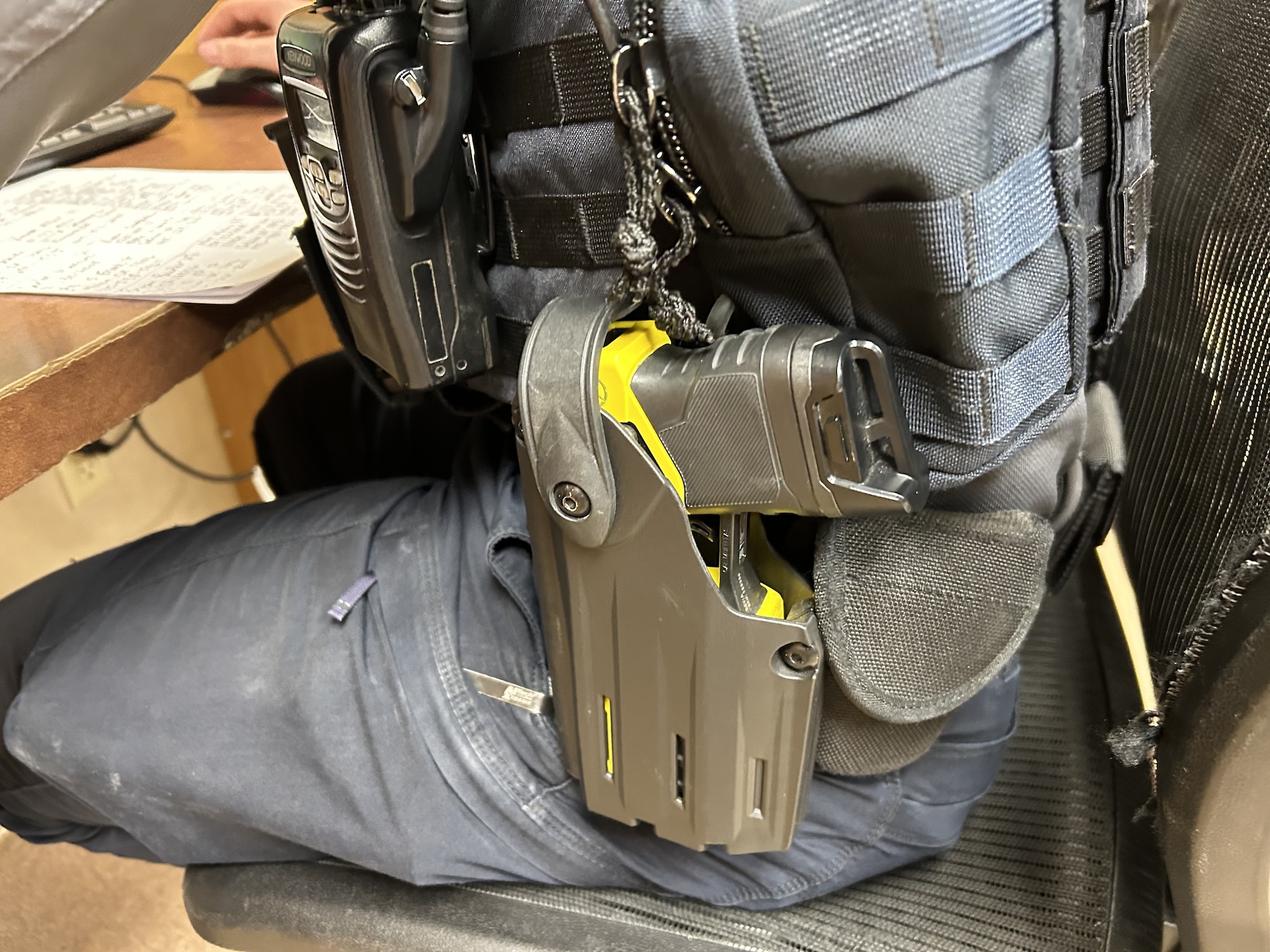
revolver_1
Our history is a part of us, and to ignore our beginnings is to ignore our foundation. Today, cops only feel adequately armed if they have a polymer, high-cap auto on their hip, with 50 rounds of ammo on-hand in magazines. Yet, fewer than 30 years ago, most American law enforcement personnel carried double-action revolvers — facing many of the same threats cops face today — but armed with 18 shots on their duty belts. Yet they faced them anyway.
By the early 1990s, most US law enforcement agencies had transitioned from revolvers to semi-autos. This isn’t to infer revolvers were no longer employed, and indeed, revolvers continue to be carried daily by a grandfathered few — those who trained in revolver use as rookies. The sight of a holstered revolver on the hip of a uniformed police officer today usually indicates great seniority. Also, the small, lightweight and easily concealed snubnosed revolvers are still used by undercover officers as backup guns, as well as by off-duty cops.
Influencing factors leading to law enforcement’s adoption of the semi-auto include the 1986 FBI Miami shootout, the US military’s transition to the Beretta 9mm and increased violence by drug traffickers. However, there is some evidence American law enforcement was already sluggishly progressing toward semi-autos.

Colt .38 Special snubnose revolvers (clockwise from top left): alloy-framed Cobra, Detective Special with factory installed hammer shroud and alloy-framed Agent. All were popular for plainclothes, undercover and off-duty law enforcement use.
A Cop’s Choice
Ultra-conservatism and resistance to change have long been recognized traits of law enforcement agencies, and yet some personnel carried semi-auto pistols long before the term “transition” had anything to do with law enforcement handguns. However, the percentage of officers who carried semi-autos of any type was never high, even in the departments that permitted them.
The most popular semi-auto was the Colt 1911-type pistol in .45 ACP. Though an excellent handgun and among the very best for law enforcement work, it required a greater degree of training than the simpler revolver. While the Colt .45 was very safe in the hands of a trained officer, it could be just the opposite for those unfamiliar with it. A few large dents in steel locker doors in the old Dallas PD basement locker room blatantly evidenced careless loading or unloading practices. I don’t recall hearing of injuries from the mishaps however, as they probably went unreported.
During this time, many agency handgun policies were very liberal, making for quite a variety of sidearms. Some guns were department-issued, while others were individually owned. The minimum (or sometimes the only) cartridge chambering was the .38 Special, but perhaps a lesser caliber was permitted for off-duty carry. Agencies often required personally owned handguns, usually revolvers from Colt, Smith & Wesson or later, Ruger. Such guidelines insured only high-quality handguns were carried.
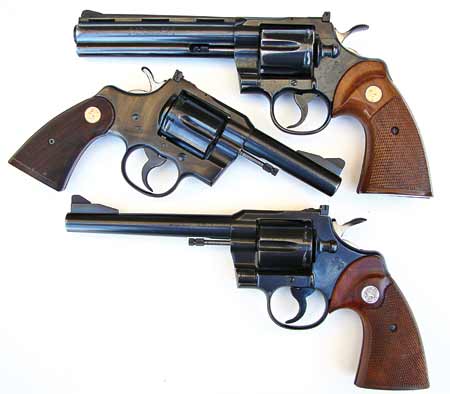
Colt L-frame double-action .357 Magnum revolvers used for law enforcement duty include (from top): Python, Trooper and the .357 Magnum model, a slightly upgraded Trooper.
Most Popular
Mainstays included Colt’s Official Police and Trooper models as well as Smith & Wesson’s Military & Police and the Combat Masterpiece, usually in .38 Special. In past decades, most officers carried one of these revolvers during at least part of their tenure, and many carried one for their entire career. As with most full-sized police revolvers, those with 4″ barrels were always among the most popular. Colt has not manufactured double-action revolvers on a production basis in some time, but Smith & Wesson continues to offer them.
The small-framed Police Positive Special filled a role in police work. The popular snubnosed variant became the Detective Special. The Cobra and Agent were lightweight versions of the Detective Special. These easily concealable guns are seldom encountered with barrel lengths other than 2″, and plainclothes and off-duty officers often favored them.
Smith & Wesson introduced the Chiefs Special in 1950. Later, given the additional designation of Model 36, the 2″-barreled “Chief” enjoyed enormous popularity in the same roles the Detective Special (and its derivatives) had been filling for years. The Chiefs Special was even more compact and lighter than the Colt, and about as small as a revolver could be for the .38 Special cartridge. The trim cylinder only held five rounds, as opposed to the Detective Special’s six, but few saw this as a disadvantage. Most will agree, however, the slight extra bulk of the Colt made it easier to shoot well. Neither revolver was, or is, pleasant to fire using the more heavily loaded +P ammunition. The Chief remains in production today.

On a limited basis, semi-automatic handguns were used in law enforcement long before the semi-automatic “transitional” period of the late 1980s. Colt 1911-types were among the most common as typified by this 70 Series A1 in .45 ACP.
Variations
Just how many .357 Magnum revolvers American law enforcement personnel have carried over the past several decades is anyone’s guess, but the number would be sizable. Depending on agency policy or user preference, it’s a safe bet some of these guns were never loaded with anything other than standard .38 Special ammunition. Colt produced the utilitarian Trooper in .357 Magnum as well as the “.357 Magnum” model (a slightly upgraded Trooper) in the 1950s. The expensive and finely finished Python also saw considerable use as a law enforcement handgun.
Smith & Wesson made the original .357 Magnum revolver in the 1930s and a couple of decades later it came to be known as the Model 27. It was always S&W’s premier .357. The frame was slightly larger than the Python, but weight and dimensions of the two were similar. According to the 1960 Gun Digest, a blue-finished Python retailed for $125 while a comparable Model 27 was $5 less.
Smith & Wesson’s .357 Combat Magnum (later called the Model 19) hit the market in the mid-50s. It was built on a K-frame with several available barrel lengths. Weight and size were about the same as many .38 Special revolvers, hence an instant appeal for law enforcement use. For the uninitiated, the .357 Magnum muzzle flash from a 2-1/2″ Model 19 was nothing short of spectacular! It was blinding in a low–light situation. In 1970, the Model 19 was offered in a stainless steel version, the Model 66. For the time, this was a state-of-the-art police revolver.
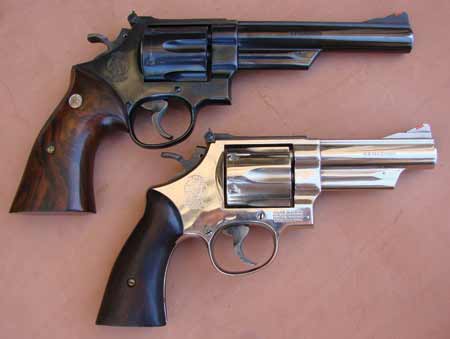
Smith & Wesson Model 29s in .44 Magnum saw some use as law enforcement revolvers, but these proved difficult to handle for anyone other than experienced handgunners. The 4”-barreled version (here in nickel) was particularly hard to master with magnum ammunition.
Least Popular
The .41 Remington Magnum never came close to achieving the popularity as a law enforcement cartridge that was anticipated with its 1964 introduction. Some officers carried the no-frills, 4″ S&W Model 58 or the same firm’s Model 57, complete with an adjustable rear sight, shrouded ejector, rod, etc. Colt didn’t market a .41 Magnum revolver. With the standard factory round, ballistics were similar to the .44 Magnum. The .41 was loud, kicked hard and produced plenty of muzzle flash, just like the .44. A milder factory load geared for police use was an excellent round but saw limited use.
Smith & Wesson’s .44 Magnum revolver appeared in late 1955, a typical deluxe N-frame model, adjustable rear sight and all. When it became the Model 29 in the late 50s, it was used in a limited capacity for police work. Full .44 Magnum loads are simply too much except for highly experienced handgunners. Some officers conceded this fact, loading their guns with milder, yet effective, .44 Special ammunition.
Some personnel carried revolvers chambered in .44 Special, a cartridge long-recognized as an excellent police and defensive cartridge. Handguns were usually in the form of an S&W Model 1926 Military, a Model 21 or a Model 24. Many of these revolvers encountered today are considered collectible, as they were never produced in large numbers.
Handguns such as .45 ACP/.45 Auto Rim revolvers — often military surplus 1917 Colt or 1917 S&W models — were used in a law enforcement capacity. Not only were the surplus guns plentiful and cheap, they were chambered for a cartridge, leaving little to be desired in a police handgun. Smith & Wesson manufactured a commercial version chambered for the .45 ACP/.45 Auto Rim (Model of 1950, later called the Model 22) until the mid-60s.
The .45 Colt cartridge, though a fine defensive round, enjoyed limited use as a law enforcement cartridge. Few double-action revolvers were chambered in .45 Colt for a long time. This changed in the late 1970s with Smith & Wesson’s production run of the Model 25-5. Sufficient size and weight of the gun helped most shooters easily handle the cartridge with its heavy bullet at moderate velocity. Law enforcement discovered the .45 Colt too late, as within a few years the semi-auto pistol transition would be underway.
Where Are They Now?
Where are the ex-law enforcement revolvers now? Dealers, often in large lots, purchased thousands from agencies. There has always been a collector’s niche for such handguns, but interest in this area has gained momentum during the past 20 years with the release of so many examples. Agency-marked guns in particular have become desirable additions to some collections. Personally owned revolvers, some with documentation, but lacking agency identification marks, occasionally come on the market. Many of these handguns show extensive finish wear, but most were fired little and are often fine shooters as-is.
A miscellany of information is available regarding the law enforcement revolver from when it was the preeminent weapon. Personnel were taught to quickly reload revolvers using nothing more than manual dexterity. Many shooters, including today’s police officers, would be amazed at how quickly this was done, even without speedloading gadgetry.
Various agencies used .22 Rimfire revolvers for initial handgun familiarization and training of recruits. It’s easier for a novice to develop good shooting habits and skills with a .22 before moving up to a centerfire revolver. One such .22 Long Rifle revolver commonly used was the Smith & Wesson K22 Combat Masterpiece (Model 18), a virtual twin to the original Combat Masterpiece (Model 15) in .38 Special. Colt offered the Trooper in .22 Long Rifle, complimenting the centerfire Trooper.
Still Effective
The mild recoil and muzzleblast of the .38 Special paid dividends for generations of cops. Never as worthless as its detractors claimed, the .38 Special revolver was instrumental in the abrupt termination of numerous criminal careers.
Certainly, it was a different time. It’s unlikely the double-action revolver will ever reclaim widespread use as a law enforcement tool. However, this takes nothing away from the history and allure of a handgun that served its purpose well for a very long time. Don’t shy away from taking a hard look at a small-frame revolver as an on-duty backup gun, either. It’s kept hundreds of cops alive in the past 60 years and those five or six reliable shots are just as important today as they were “back then.”
By Mike Thomas


